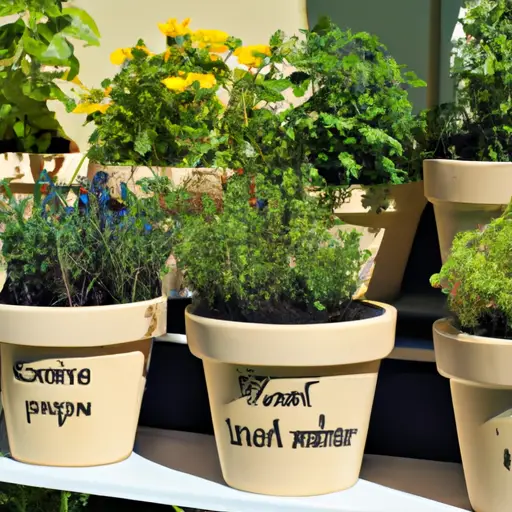Growing Your Own Fresh Herbs with Container Gardening
In recent years, there has been a surge in the popularity of container gardening. People living in small apartments or houses with limited outdoor space have found a solution to their gardening aspirations through this innovative method. One particular aspect of container gardening that has gained widespread attention is growing fresh herbs.
Herbs are not only a flavorful addition to any meal but also possess numerous health benefits. Having a stash of fresh herbs readily available in your own home can elevate your cooking, provide therapeutic relief, and add a touch of natural beauty to your surroundings. Container gardening allows you to cultivate a wide variety of herbs right on your windowsill, balcony, or any other convenient spot within your living space.
To get started with growing fresh herbs through container gardening, here are some helpful tips:
1. Choose the right containers: The first step is to select suitable containers for your herbs. Consider using pots or planters with good drainage holes and ensure they are large enough to accommodate the herb’s root system as it grows.
2. Pick the perfect location: Herbs love sunlight; therefore, choose a spot for your containers that receives at least six hours of direct sunlight every day. Windowsills facing south or west generally provide ample sunlight for thriving herb growth.
3. Selecting the ideal herbs: Decide which herbs you would like to grow based on their culinary uses or therapeutic properties. Popular choices for container gardening include basil, mint, parsley, rosemary, thyme, and cilantro. Consider starting with a few easy-to-grow varieties if you are new to gardening.
4. Soil and watering requirements: Use well-draining potting soil specifically designed for container plants. This will prevent waterlogging and promote healthy root growth. When it comes to watering, ensure that the soil remains consistently moist but never soggy.
5. Fertilization and maintenance: Herbs benefit from regular feeding with organic fertilizers. Use a balanced, slow-release fertilizer or compost to provide them with essential nutrients. Additionally, remember to trim and prune your herbs regularly to promote bushier growth and prevent them from becoming leggy.
6. Harvesting and using your herbs: The joy of growing your own fresh herbs lies in being able to harvest them whenever you need. Begin gently plucking leaves from the plant once it reaches a mature size, taking care not to remove more than one-third of the foliage at a time. Utilize the fresh herbs in your favorite recipes, teas, or even create homemade herb-infused oils and vinegars.
7. Overwintering: Some herbs are perennials that can survive winter outdoors with proper protection, while others are annuals that may not withstand extreme cold temperatures. Consider bringing potted herb plants indoors during the colder months or replant them in suitable locations in your garden if you have one.
Growing fresh herbs through container gardening is not only rewarding but also environmentally friendly. It cuts down on unnecessary packaging and reduces transportation emissions associated with store-bought herbs. Moreover, cultivating your own herbs allows you to experiment with different varieties that may not be readily available at local grocery stores.
So, whether you’re an experienced gardener or just starting on your green thumb journey, container gardening offers an accessible and fulfilling way to grow your own fresh herbs. Start small with a few pots and watch as your indoor garden thrives and provides you with an abundance of flavors and aromas right at your fingertips.














